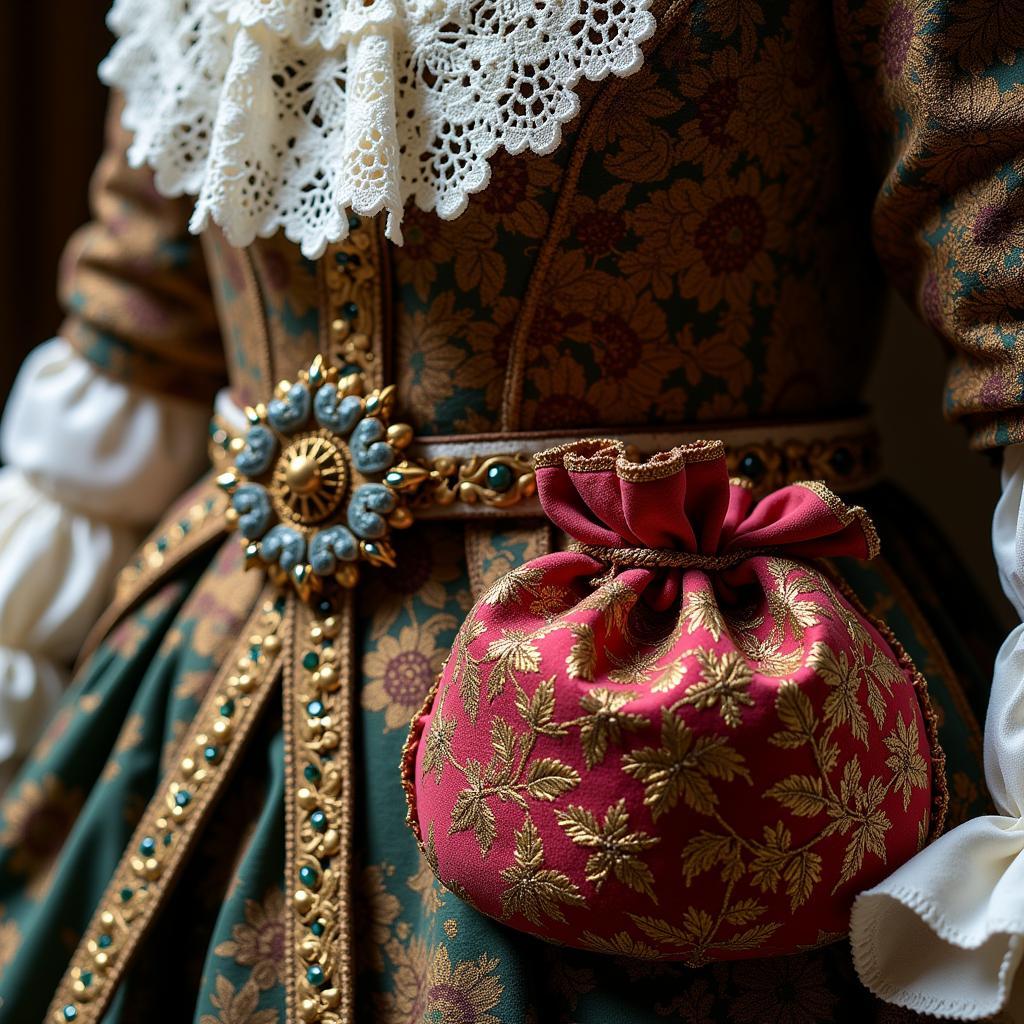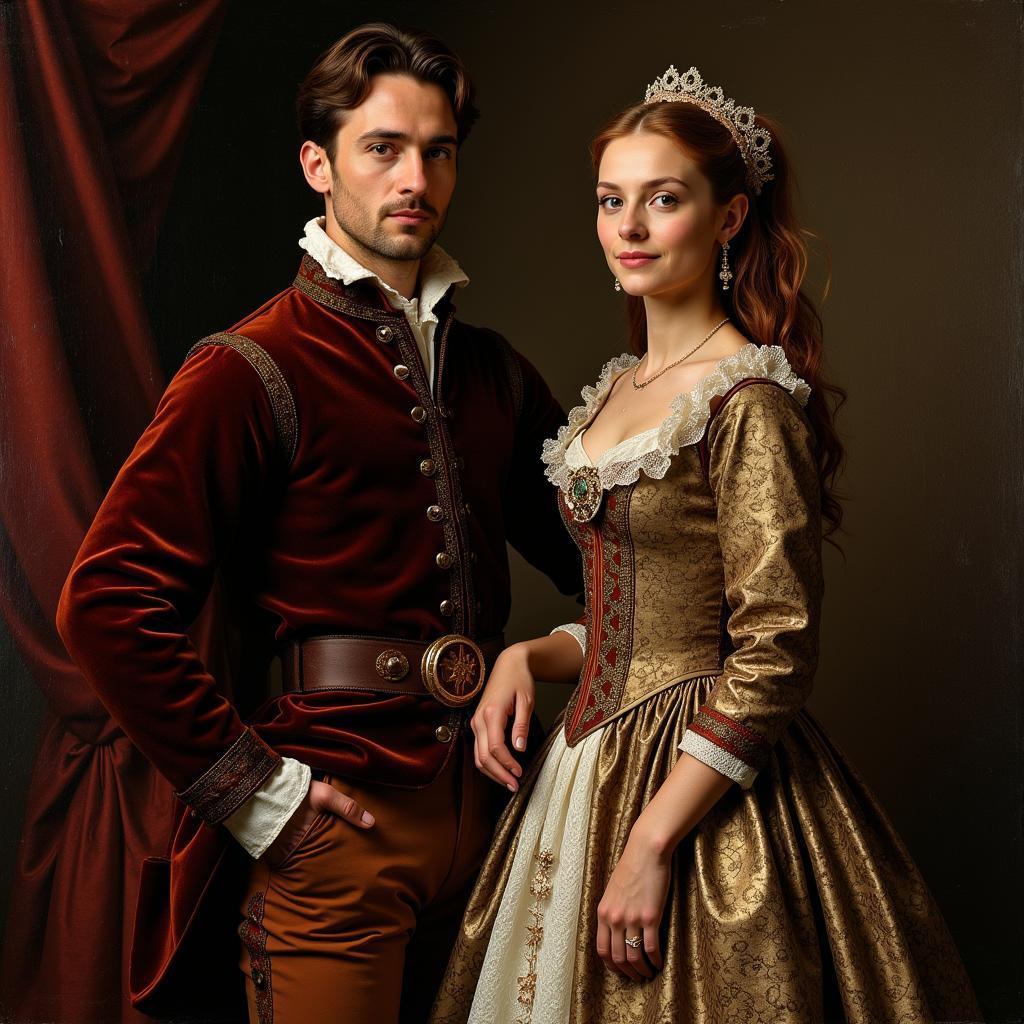German Renaissance Clothing, far from being a dusty relic of the past, offers a fascinating glimpse into a vibrant and transformative era. From the lavish courts of the Holy Roman Empire to the bustling workshops of Augsburg and Nuremberg, clothing played a pivotal role in reflecting social status, expressing personal identity, and showcasing the burgeoning artistic spirit of the age. Join us as we delve into the world of doublets and kirtles, unravel the mysteries of slashing and puffing, and discover the stories woven into the fabric of German Renaissance fashion.
 German Renaissance Clothing Accessories
German Renaissance Clothing Accessories
The Rise of Humanism and Its Influence on Fashion
The German Renaissance, spanning roughly from the late 15th to the early 17th centuries, witnessed a resurgence of interest in classical antiquity. Humanist ideals, emphasizing individual potential and worldly achievements, began to challenge the previously dominant medieval worldview. This cultural shift had a profound impact on fashion, leading to a departure from the flowing lines and austere aesthetics of the Middle Ages towards a more structured, opulent, and individualistic style.
One of the most significant changes was the adoption of tailoring as a means of shaping and accentuating the human form. Men’s clothing, in particular, became increasingly fitted, with doublets – jackets that were often padded and stiffened – cinched at the waist to create a V-shaped silhouette. Women’s gowns, while still modest by today’s standards, also began to emphasize a more defined waistline, often with the help of corsets.
 Velvet and Lace in German Renaissance
Velvet and Lace in German Renaissance
Fabric and Ornamentation: Symbols of Wealth and Status
The German Renaissance saw an explosion in the availability and variety of textiles. Trade with the East brought an influx of luxurious fabrics like silk, velvet, and brocade, which were eagerly adopted by the wealthy elite. These rich materials were often further embellished with intricate embroidery, jewels, and precious metals, transforming garments into veritable works of art.
Color also played a vital role in conveying social standing. Bright, vibrant hues like crimson, sapphire blue, and emerald green were favored by the nobility, while more subdued shades were typically worn by the lower classes. Sumptuary laws, designed to regulate consumption and reinforce social hierarchy, often dictated who could wear what, further cementing the connection between clothing and status.
Beyond the Elite: Everyday Dress in Renaissance Germany
While portraits of noblemen and women provide a glimpse into the height of Renaissance fashion, it’s important to remember that the majority of the population did not dress in such finery. For the common people – merchants, artisans, farmers – clothing served a primarily practical purpose. Garments were made from more readily available materials like wool, linen, and leather, and were designed for durability and comfort.
Yet, even everyday clothing reflected the stylistic trends of the era. Men, for example, often wore a combination of a doublet, breeches (knee-length trousers), and a loose-fitting over-garment like a jerkin or a cape. Women typically wore a chemise (a linen undergarment), a bodice, a skirt, and an apron. While simpler in design and less ornate than their upper-class counterparts, these garments still incorporated elements like slashing, puffing, and decorative trim, showcasing the pervasive influence of Renaissance aesthetics.
FAQs about German Renaissance Clothing
1. What type of shoes did people wear during the German Renaissance?
Men and women typically wore leather shoes with pointed toes, often decorated with buckles, ribbons, or slashing.
2. Did hairstyles play a role in German Renaissance fashion?
Yes, hairstyles were an important part of the overall look. Men often wore their hair short, while women favored elaborate updos adorned with jewels, ribbons, and even miniature portraits.
3. Were there any specific garments associated with certain professions or social groups?
Yes, some garments, like the scholar’s gown or the merchant’s doublet, were associated with specific occupations or social groups, further highlighting the role of clothing in communicating identity.
4. Where can I learn more about German Renaissance clothing?
Museums with collections of historical costume, art history books, and online resources dedicated to the Renaissance period offer a wealth of information on this fascinating subject.
Need Help? Contact Us!
For any questions or assistance, please contact us:
- Phone Number: 0909802228
- Email: doibongda@gmail.com
- Address: 101 Đ. Lý Chiêu Hoàng, Phường 10, Quận 6, Hồ Chí Minh, Việt Nam.
Our customer service team is available 24/7 to assist you.